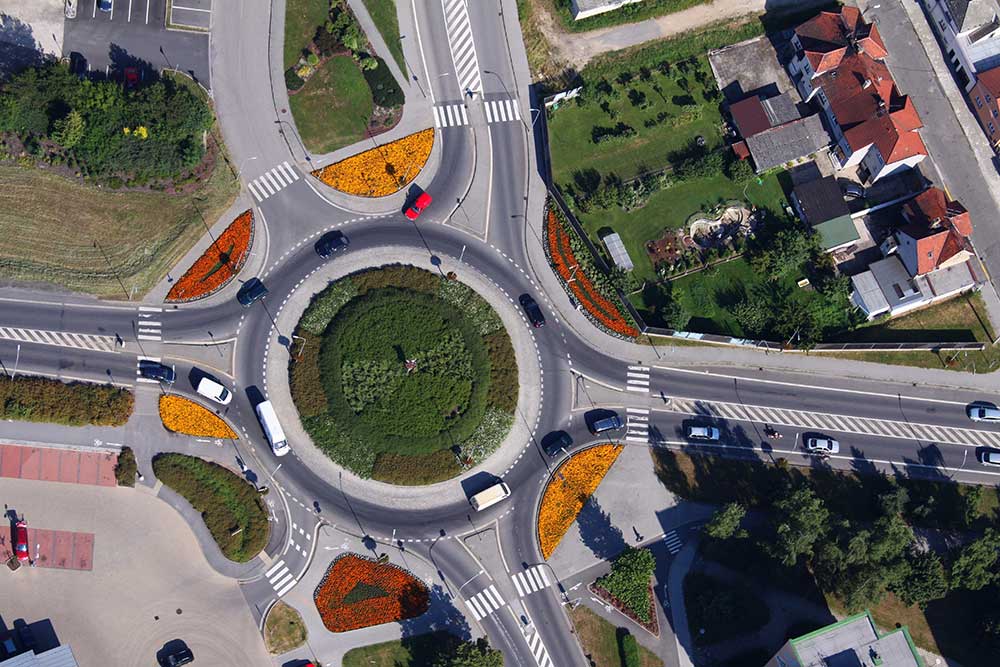Unraveling the Intricate Process Behind Designing Traffic Circles for Enhanced Safety and Fluidity
As bustling urban landscapes face the mounting challenge of traffic congestion, traffic circles, also known as roundabouts, emerge as an ingenious solution. Far from being just aesthetic elements, traffic circles are feats of engineering designed to improve traffic flow and reduce accidents. This article discusses the nuts and bolts of creating traffic circles, offering insights for engineers seeking to build these modern marvels.
Understanding the Merits:
Before delving into the creation process, it’s essential to understand why traffic circles are gaining popularity. They have been found to reduce traffic collisions and fatalities by eliminating high-speed, right-angle collisions. They also contribute to a smoother traffic flow, reducing congestion and, subsequently, emissions. Various studies have indicated that traffic circles or roundabouts can significantly reduce the number of severe crashes and related fatalities compared to traditional intersections. According to the U.S. Federal Highway Administration (FHWA), roundabouts have been shown to reduce fatal crashes by up to 90% and injury crashes by up to 75%.
The Phases of Creation:
Designing and constructing a traffic circle can be broken down into several phases:
- Feasibility Study and Site Selection: A thorough feasibility study must be conducted before setting out to design a traffic circle. Engineers need to assess traffic volumes, analyze collision history, and evaluate the geometry of the intersection to determine if a traffic circle is the most appropriate solution.
- Conceptual Design: This phase involves creating an initial design for the traffic circle. Key considerations include the circle’s diameter, which should be based on traffic volume and the speed of the approaching roads; the number of lanes; pedestrian and cyclist accommodations; and landscaping. Modeling tools and simulations can be used to optimize the design.
- Detailed Engineering Design: After finalizing the conceptual design, engineers embark on the detailed design. This includes the precise geometry of the circle, the design of entry and exit lanes, signage and marking, drainage, lighting, and landscaping. It’s crucial to adhere to design standards such as those outlined in the Federal Highway Administration’s Roundabouts: An Informational Guide.
- Construction: With the design in hand, construction begins. This phase often involves road closures and detours. Engineers must ensure that the construction process adheres to the design specifications and that quality materials are used. Regular site inspections are critical.
- Post-Construction Evaluation: After construction, evaluating the traffic circle’s performance is essential. This includes analyzing traffic flow, assessing any changes in collision patterns, and obtaining feedback from road users. This information can be used to make any necessary adjustments.
Special Considerations:
- Pedestrians and Cyclists: Special care must be taken to ensure the safety of pedestrians and cyclists. This may involve creating crosswalks set back from the circle and providing adequate signage.
- Landscaping and Aesthetics: The center of the traffic circle offers beautification opportunities. This can range from simple grass and shrubs to sculptures and fountains. However, care must be taken to ensure that landscaping does not impede drivers’ visibility.
- Public Engagement: Including the community in the planning process can be instrumental in the project’s success. Public input can provide valuable insights and foster a sense of ownership among residents.
Traffic Circles vs. Jug Handles:
Traffic circles and jug handles are both designed to improve the flow of traffic and reduce accidents at intersections, but they serve different scenarios and have their own sets of advantages. Here, we’ll focus on why a traffic circle might be considered better than a jug handle in certain contexts:
- Safety: Traffic circles or roundabouts are generally safer than traditional intersections with jug handles. This is mainly because, in traffic circles, traffic moves in one direction, reducing conflict points. In contrast, jug handles can still have conflicting traffic movements.
- Efficiency and Traffic Flow: Traffic circles often provide a smoother traffic flow. In a roundabout, traffic continuously flows around the central island, which can reduce delays. On the other hand, jug handles may require vehicles to wait for a green signal before proceeding, which can cause delays, especially during peak traffic hours.
- Space Utilization: Traffic circles usually have a smaller footprint than jug handles. A jug handle requires additional lanes and often more land, particularly if multiple lanes are in the handle. This can be a disadvantage in urban areas where space is premium.
- Fuel Consumption and Emissions: As vehicles in traffic circles generally don’t have to come to a full stop and can continue to move, this can lead to lower fuel consumption and emissions compared to the stop-and-go nature at intersections with jug handles.
- Pedestrian and Cyclist Accommodation: Traffic circles can be designed to be more accommodating for pedestrians and cyclists. They can offer a safer environment by including crosswalks and bike paths around the circle’s perimeter. In contrast, jug handles may require more complex crossing paths for pedestrians and cyclists.
- Aesthetics and Landscaping: Traffic circles offer an opportunity for beautification within the central island. This can be aesthetically pleasing and contribute to a neighborhood’s character. Jug handles generally do not offer similar opportunities for landscaping.
However, it’s essential to note that traffic circles are not always the best solution for every intersection. There are situations where jug handles may be more suitable, especially where right-of-way constraints or specific traffic patterns make it challenging to construct a roundabout. The decision between implementing a traffic circle or a jug handle should be based on a thorough analysis of traffic data, safety considerations, and the specific needs of the area in question.
A Symphony of Art and Science
The creation of traffic circles is a symphony of art and science. Through meticulous design and execution, these structures have the potential to improve the safety and efficiency of road intersections drastically. As engineers, the onus is on us to skillfully navigate the delicate balance between functionality, safety, and aesthetics in crafting traffic circles that are not just infrastructural elements but landmarks in their own right.




